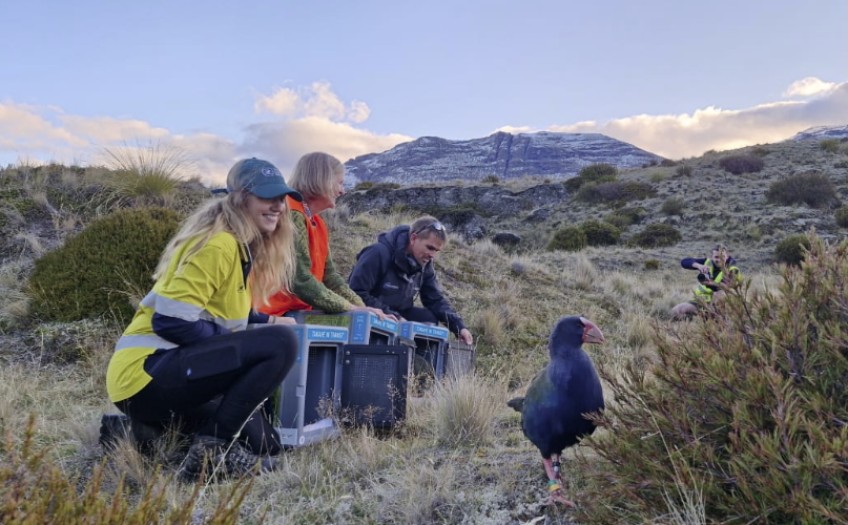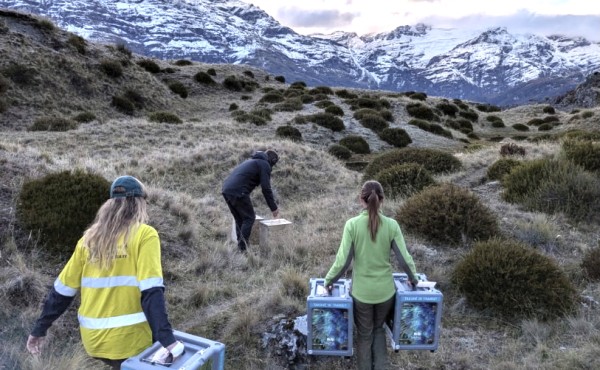Rees Valley takahē make a comeback

In Shelter Rock Hut, near the head of the Rees Valley, the visitor book comment section is sprinkled with excited notes about bird sightings.
Twice believed to be extinct, takahē, the ultimate comeback bird, are now being spotted in the wild by backcountry trampers in the upper Whakatipu.
Bringing the birds back
It was 1948 when takahē were rediscovered for the second time by Dr Geoffrey Orbell's party in the remote Murchison Mountains.
With only a small population remaining, intensive management of the birds was deemed necessary. In the 1980s, Burwood Takahē Centre was created to manage breeding and chick rearing. 'Security populations' were established on offshore predator-free islands. A Specially Protected Area was created in the Murchison Mountains to protect the remaining wild population, with access by permit only.
The hard work of DOC's takahē recovery team paid off, though not without a few setbacks along the way. The takahē population grew, hitting an estimated 300 in 2016. In 2018, takahē were reintroduced to Kahurangi National Park with the hope of establishing a second wild population. Things didn't go perfectly to plan, with a spate of bird deaths in the second year after release, and concerns about the suitability of the habitat.
In 2023, the population hit 500 birds, and in August, 18 takahē were released on to Ngāi Tahu land at Greenstone Station in the Upper Whakatipu, to set up a third wild population.
After two promising active breeding seasons, the birds took a bit of a hit earlier this year, with five thought to be killed by just one or two stoats. But after a step-up in trapping effort, it's believed the culprits have been caught.
Return to the Rees
A few valleys over from the Greenstone, the braids of the Rees River ribbon their way from the high alpine head to feed into Lake Whakatipu at Glenorchy. With a mixture of introduced grasses, beech forest edges, and alpine tussock, it is hoped this valley will prove to be good takahē country.

Fifty-one birds have been released since February this year. There have been two mortalities - but neither are thought to have been due to predation.
One bird, named Frost, caused a bit of excitement when he walked all the way from the Rees Valley into Glenorchy village, where he was found on a golf course. He was relocated back into the valley, and thankfully now seems content to stay in the backcountry.
But it's stoats rather than wanderlust that remain the biggest concern, says Chrissy Becker-Fifield.
Chrissy is part of the Glenorchy field team for Southern Lakes Sanctuary - an organisation involved with checking traps and monthly monitoring of the takahē in the Rees, alongside other roles including coordinating volunteers for local conservation group the Routeburn-Dart Wildlife Trust.
Extensive trap lines had to be established before takahē could be released here. The Routeburn-Dart Wildlife Trust have long been trapping in some areas of the upper Whakatipu, as have the landowners of the Rees Valley Station. But with the work of the Southern Lakes Sanctuary, the traps now extend further into the valley and across alpine saddles to connect to other trap lines in both the Dart and Matukituki valleys.
More releases are planned before the end of the year, and those involved have high hopes for the takahē's newest home.





















